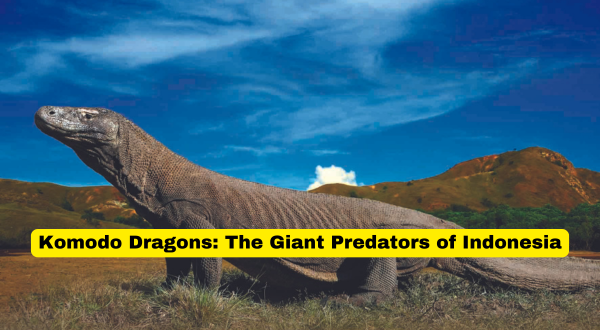Komodo dragons, scientifically known as Varanus komodoensis, are the largest living lizards in the world. Found only in the Indonesian islands of Komodo, Rinca, Flores, and Gili Motang, these formidable creatures are often referred to as “dragons” due to their fearsome appearance and powerful predatory abilities.
Physical Characteristics
Adult Komodo dragons can reach up to 10 feet (3 meters) in length and weigh as much as 150-200 pounds (70-90 kilograms). Their rough, scaly skin is typically grayish-brown, providing camouflage in their natural habitat. Equipped with sharp claws and a long, muscular tail, Komodo dragons are built for both combat and hunting. Their most dangerous weapon, however, is their serrated, shark-like teeth, which are capable of delivering deadly bites. These bites are particularly perilous due to the toxic bacteria found in the Komodo’s saliva, which can cause severe infections in prey.
Habitat and Distribution
Inhabit the dry, volcanic islands within Indonesia’s Lesser Sunda chain. Their preferred environments include savannah grasslands, tropical forests, and coastal areas, where they can blend in with the landscape and ambush prey. Although they are excellent swimmers and can travel between islands, their natural range is limited to a few locations within Indonesia.
Behavior and Diet
As apex predators, Komodo dragons are carnivorous and known for their opportunistic feeding habits. Their diet consists of a variety of animals, including deer, wild boar, and water buffalo. Komodo dragons are ambush hunters, lying in wait for their prey before launching a swift, powerful attack.
Reproduction and Life Cycle
Reproduce sexually, with females laying up to 20 eggs at a time. Remarkably, they are also capable of parthenogenesis, a form of asexual reproduction where a female can produce offspring without mating with a male. The eggs are incubated in nests or burrows for about 8-9 months before hatching. Young Komodo are vulnerable to predation by adults and other predators, so they spend their early years living in trees to avoid danger. As they mature, they descend to the ground, where they become formidable predators in their own right.
Conservation Status
Komodo dragons are classified as vulnerable by the International Union for Conservation of Nature (IUCN). Their populations are threatened by habitat loss, human encroachment, and declining prey availability. To protect these unique creatures, the Indonesian government established Komodo National Park in 1980, which encompasses several of the islands where Komodo dragons are found. Conservation efforts are ongoing, with a focus on habitat preservation, anti-poaching measures, and maintaining a stable prey population.
Importance and Tourism
Komodo dragons are not only a vital part of their ecosystem but also a significant draw for ecotourism. Thousands of visitors travel to Komodo National Park each year to witness these extraordinary reptiles in their natural habitat.
In conclusion, Komodo dragons are a symbol of Indonesia’s rich biodiversity and natural heritage. As the world’s largest lizards, they capture the imagination with their ancient, dragon-like appearance and fascinating behavior.
 yuscuti.com Portal Berita Terpercaya
yuscuti.com Portal Berita Terpercaya
